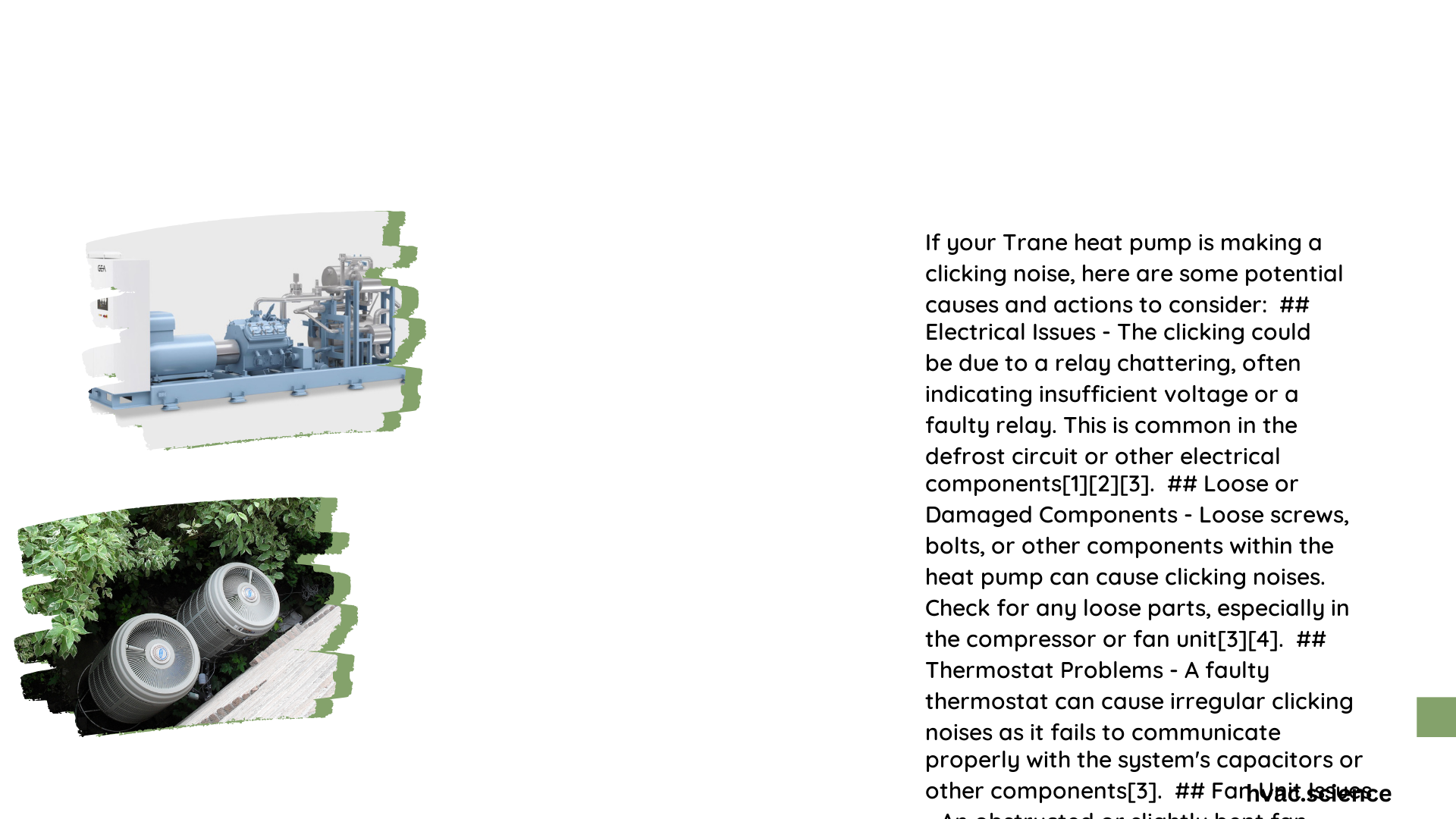A Trane heat pump producing clicking noises can signal underlying mechanical, electrical, or environmental problems that require immediate attention. These sounds might indicate loose components, electrical faults, or system stress, potentially compromising your unit’s performance and longevity. Understanding the root causes and implementing targeted solutions can help restore your heat pump’s smooth, quiet operation and prevent potential costly damages.
What Causes Clicking Noises in Trane Heat Pumps?
Mechanical Component Challenges
Clicking noises in Trane heat pumps often stem from mechanical issues that disrupt normal system operation. These challenges can include:
- Loose Internal Components
- Compressor mounting bolts
- Fan blade attachments
-
Vibrating internal mechanisms
-
Structural Wear Indicators
- Bent or misaligned fan blades
- Deteriorating mechanical connections
- Aged system components
Electrical System Complications
Electrical faults frequently contribute to clicking sounds in heat pumps:
| Electrical Component | Potential Issue | Symptoms |
|---|---|---|
| Contactor | Relay malfunction | Intermittent clicking |
| Capacitor | Electrical discharge | Clicking before motor startup |
| Wiring | Loose connections | Sporadic electrical sounds |
Environmental Stress Factors
External conditions can also trigger unusual heat pump behaviors:
- Temperature-Related Challenges
- Ice accumulation on coils
- Extreme cold weather performance
- Restricted airflow due to environmental debris
How to Diagnose Trane Heat Pump Clicking Noises?

Step-by-Step Diagnostic Process
Initial Assessment
- Listen carefully to determine noise location
- Note frequency and duration of clicking
- Observe system performance during different operational modes
Visual Inspection Techniques
- Power down the heat pump
- Remove external access panels
- Inspect fan blades, electrical connections, and mounting hardware
- Check for visible signs of wear or damage
Professional Troubleshooting Recommendations
When to Seek Expert Help
- Persistent clicking after basic troubleshooting
- Complex electrical system issues
- Potential compressor or major component failures
What Are Effective Repair Strategies?
Targeted Repair Approaches
- Mechanical Repairs
- Tighten loose mounting hardware
- Replace worn fan blades
-
Lubricate moving components
-
Electrical System Interventions
- Replace faulty contactors
- Install new capacitors
- Secure electrical connections
Maintenance Best Practices
- Conduct quarterly system inspections
- Clean external unit regularly
- Maintain clear surrounding area
- Schedule professional annual maintenance
Cost and Time Considerations
| Repair Type | Estimated Cost | Typical Duration |
|---|---|---|
| Minor Adjustments | $50 – $150 | 1-2 hours |
| Component Replacement | $200 – $500 | 2-4 hours |
| Professional Diagnostic | $100 – $250 | 1-3 hours |
Preventative Maintenance Tips
- Use high-quality air filters
- Maintain consistent thermostat settings
- Protect outdoor unit from debris
- Monitor system performance regularly
Critical Warning Signs
Immediate Action Required
- Persistent loud clicking
- Reduced heating/cooling efficiency
- Unusual burning smell
- Complete system shutdown
Conclusion
Understanding and addressing Trane heat pump clicking noises requires systematic diagnosis, targeted interventions, and proactive maintenance. While some issues can be resolved through basic troubleshooting, complex problems demand professional expertise.
Reference:
– Trane Official Support
– HVAC Troubleshooting Guide
– Professional HVAC Maintenance Resources
